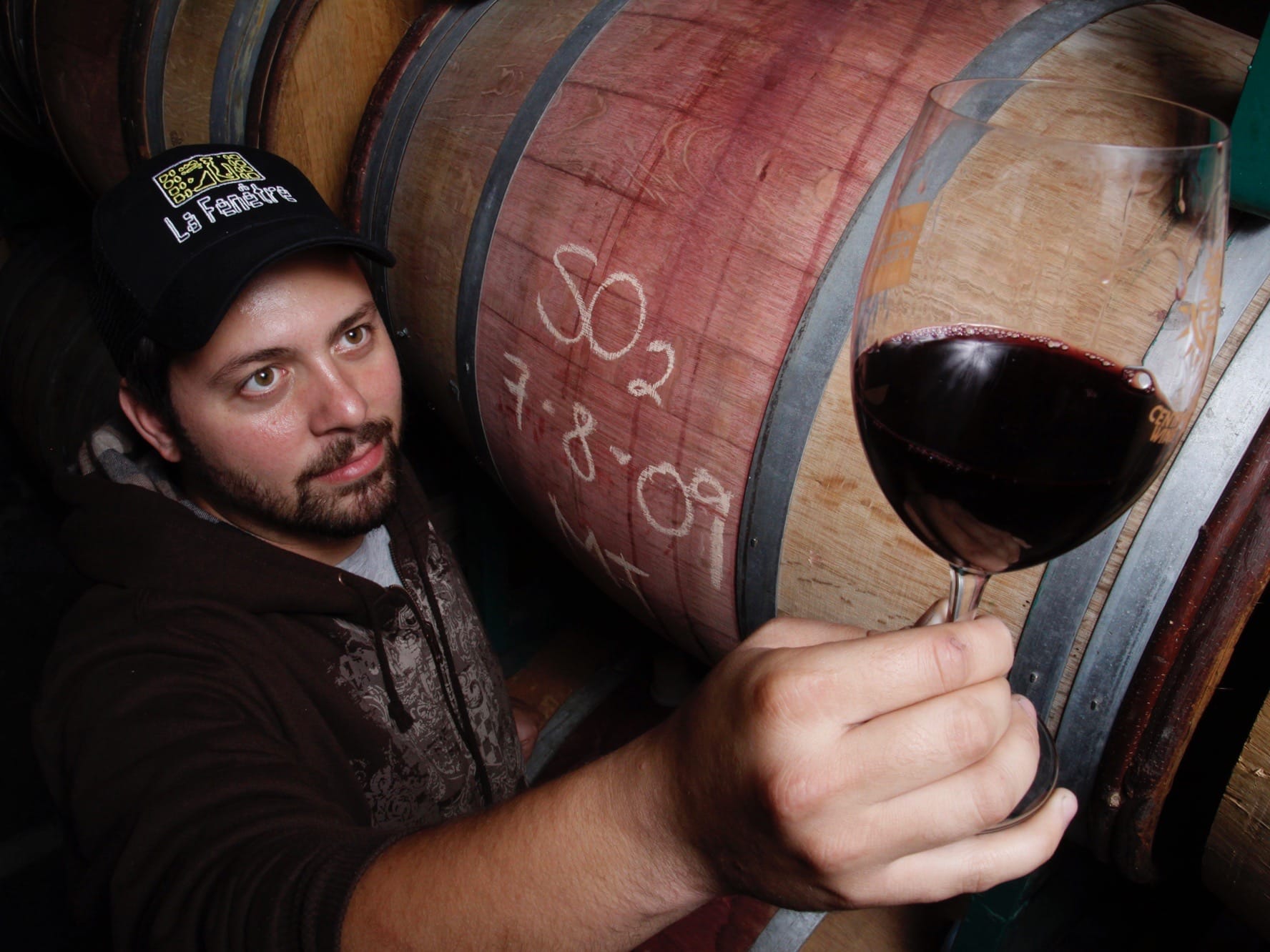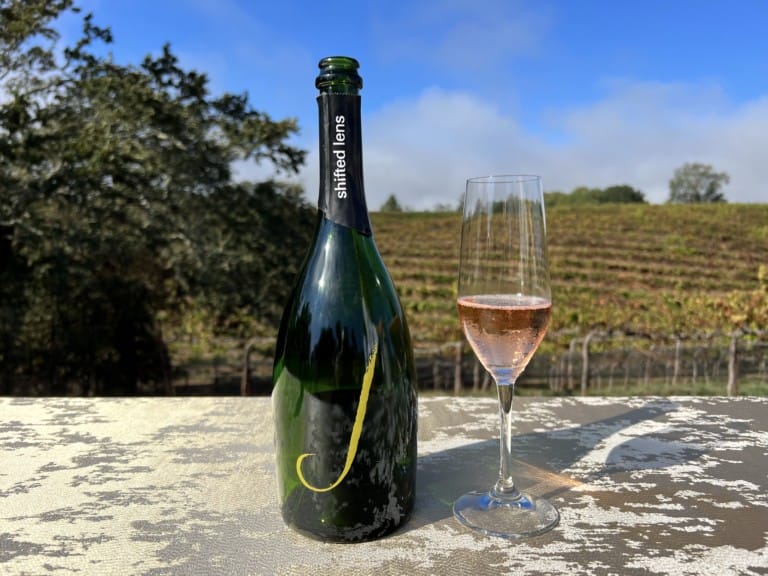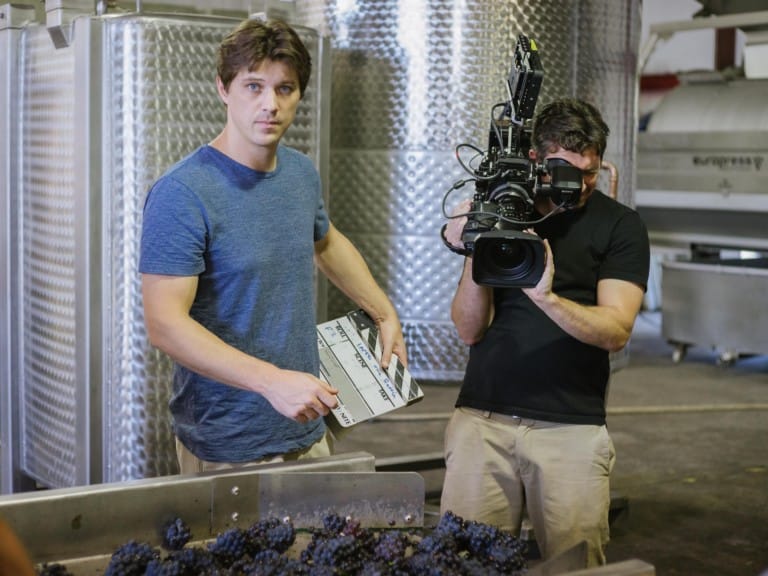Joshua Klapper’s journey to becoming a California winemaker began in a dining room. As a server at chef Daniel Boulud’s celebrated Café Boulud in Manhattan, Klapper tasted an exquisite 1945 Chateau Latour. From that fortuitous sip, he knew his calling was wine: first as sommelier at Los Angeles’ Sona, where he advanced to wine director, and now as winemaker.
He learned the profession first-hand in Santa Barbara County’s vineyards and under the mentorship of such master vintners as Jim Clendenen of Au Bon Climat. A small production, artisan winemaker—a classic garagiste—Klapper sources his fruit predominantly from Santa Barbara County and produces and bottles his vintages of La Fenêtre, La Fenêtre À Côté, and Tête Brûlée at Central Coast Wine Services in Santa Maria. He lives in Los Angeles with his family and commutes bimonthly to the wine country. 2009 is his sixth vintage.
What is your philosophy for making wine?
I try to craft wines with a reasonable degree of alcohol that are elegant, perfectly balanced and long to finish that also pair well with food. While the great classic, old world wine regions of Burgundy, Bordeaux and the Rhône are my benchmarks, I also respect the terroir of the vineyards from which I purchase fruit. I typically pick my fruit less ripe than other winemakers, meaning there is less sugar, with more natural acidity and thus less alcohol in the finished product.
My goal is that the wine will make itself: therefore I pick at the right time and my grapes have a low ph—unwanted microbes and bacteria can’t grow in it–and I don’t have to add harsh chemicals or nutrients. What you get in the ground is what you get in the wine. I use one kind of French oak barrel, the same as those made for Domaine de la Romanée-Conti, regarded as one of the most prestigious wineries in the world.

Where do you source your grapes?
I source my grapes primarily from the Santa Maria Valley; that encompasses my Chardonnay and Pinot Noir production. My Syrah grapes are sourced from biodynamically cultivated vineyards in the Edna Valley. In fact, all of my grapes come from vineyards that are either organic or biodynamic or grown via sustainable practices. The Cabernet Sauvignon grapes for my Tête Brûlée come from Atlas Peak in Napa.
What inspired the name La Fenêtre?
When I first started out, my idea was to just make blends—sourcing the juice from expert winemakers. However, I soon found out that the name I picked, Monogram, was trademarked so I needed to come up with a new name quickly. As the project had become an homage to all the great old French regions–Burgundy, Bordeaux and the Rhône –I read through a French dictionary and found titles that I liked (but checked to see if they were taken). La Fenêtre means the window; À Côté —next door. These were some of the first words I learned in high school French. I called a bunch of my friends and they all agreed it was cool. La Fenêtre ties into the idea that a wine made by a single person is an expression of that winemaker and their philosophy. So I was playing off of that adage that art is the window to your soul: wine is the window to my soul.
Why did you create À Côté, your second label?
I wish that I could say that I saw the writing on the wall regarding the economy but I wanted to make a wine that was affordable to restaurants to sell by the glass. So in 2007, I began declassifying fruit that I didn’t deem suitable for La Fenêtre and that became À Côté. Those wines have been the most popular I have released; something I could never have anticipated.
As a former sommelier, what are your recommendations for serving wine?
I decant everything I drink be it a white, red or port except the extremely delicate stuff. All wine benefits from oxygen. However, you don’t want to serve it too cold, as you’ll lose what’s great about it. Whites should be decanted at cellar temperature (55 degrees). For my wines, La Fenêtre whites should be at cellar temp. À Côté whites, with slightly higher acidity, should be chilled at 48 degrees. Reds: just above cellar at 60 degrees–any higher temperature the wines will blow off alcohol and become less balanced. However, any white wine that’s under $15, you can’t make it too cold. And any wine that’s above 70 degrees simply won’t taste good any more.
Where are your wines available?
I pre-sell via my mailing list twice a year. My wines are available at Fraiche, Riva, Providence and at San Francisco’s Michael Mina as well as at approximately 80 other restaurants statewide and independent wine shops like Silverlake Wine, Wally’s and K&L Wine Merchants. I don’t have a tasting room but I’m happy to set up a barrel tasting if you’re visiting the Santa Maria Valley.









Blog Comments
la fenetre
April 3, 2010 at 11:07 AM
[…] be published) (required) Website. You need to enable javascript in order to use Simple CAPTCHA. …Food GPS Q&A with La Fenetre winemaker Joshua KlapperA small production, artisan winemakera classic garagisteKlapper sources his fruit predominantly from […]
Tweets that mention Food GPS » Blog Archive » Q&A with La Fenetre winemaker Joshua Klapper -- Topsy.com
October 5, 2009 at 9:06 PM
[…] This post was mentioned on Twitter by Steve Remillong. Steve Remillong said: Food GPS » Blog Archive » Q&A with La Fenetre winemaker Joshua Klapper http://bit.ly/J3bQz […]